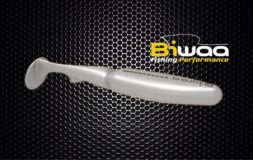8 Tips to properly handle trout
Written by Colton Orbaker – Twig ‘N’ Timber Outdoors
Excited new anglers who practice catch-and- release fishing must take mind to follow certain steps to better the chances of survival for the fish they catch. Discussed below, are many, but not all. of the steps and tips for increasing your quarry’s chances at surviving your encounter.
1. NEVER put your fingers in the gills of a fish unless you plan to ethically kill and keep your fish. Trout are very delicate, and this will do incredible damage to your fish.
2. WET your hands prior to handling fish. Trout (and other fish species) have a protective slime coating that is removed by dry hands. Again, unless you plan to dispatch said catch ethically and keep it, wet your hands before handling. Using a specialized tailing glove helps improve your grip, and protect the fish.
3. USE barbless hooks! Barbless hooks limit the amount of handling time required to unhook a fish, as well as reduce the physical trauma the fish endures. In addition, fish hooked deeper in the gullet, have a better chance of surviving damage from a single small hole, compared to a hole created from ripping a barbed hook out.
4. HANDLE trout as little as possible, and as QUICKLY as possible. The quicker your release of the fish, the better it recovers!
5. KEEP ‘EM WET! Fish breathe through the use of gills in moving water. When you remove a fish from the water, it is essentially suffocating the fish. Smaller fish have very limited capacity to survive out of the water, and must be unhooked even faster. By keeping the fish in the water, with their gills submerged, the fish maintains its “breath”.
6. ONLY use a rubberized netting. Rubberized nets (without knots) are designed to maintain as much of the slimy skin coating as possible. Other nets made from different materials, often harm the fish, and make removing flies more difficult.
7. SCOOP the fish with an open hand from underneath if possible. This prevents squeezing, and harming the fish. Many anglers also tail the fish, by grabbing the base of the tail. This gives them control to scoop the underbelly of the fish with the other hand.
8. DO NOT play the fish for fun! While it may be enjoyable to fight a fish for an extended period of time, it taxes the fish greatly! Play the fish as quickly as possible, to avoid over fatiguing them to the point of exhaustion. They are unable to recover at times.
By following some of these suggestions, we better our fisheries by increasing the return annually. Catch and release angling aids in conservation efforts in both stocked and naturally occurring strains of fish. In addition, it teaches young anglers ethical practices in regards to wildlife. These important skills develop morality and ethical understanding.











